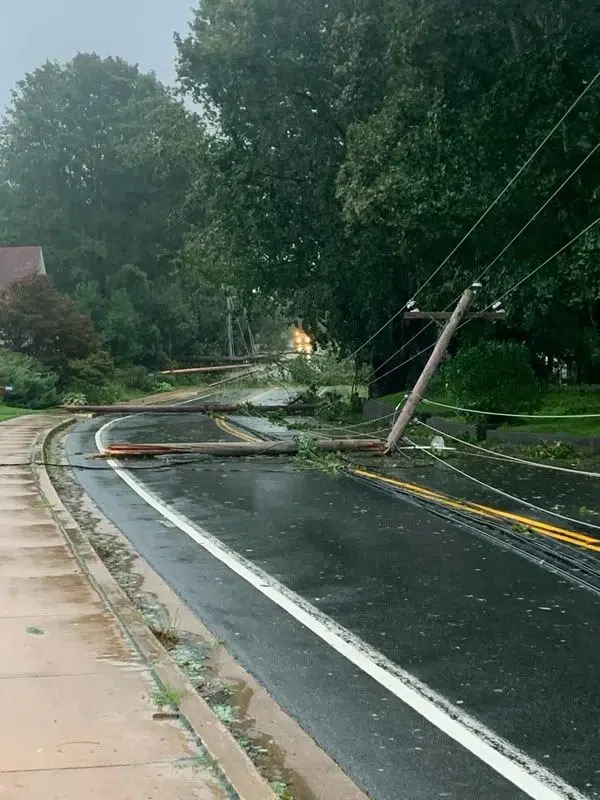
Snapped power poles in Milton, near Liverpool. (Courtesy of Nova Scotia Power).
Over the course of post-tropical storm Lee, about 277,000 people lost power due to the heavy winds. Since the first outage was reported, Nova Scotia Power has turned the lights back on for all but roughly 20,000 of those customers, but it hasn’t been easy.
Lee thrashed much of the province over a 24-hour period on Saturday. Wind speeds regularly reached the 100 kilometres per hour threshold, and in Halifax they even gusted up to 120 kilometres per hour, which officially classifies them as hurricane force.
Nova Scotia Power was expecting outages due to the extreme wind. They had opened their emergency operations centre on Friday, and it remains open today while crews finish up their restoration work. In some cases, it’s as simple as pulling a tree branch off a line and making some slight repairs. But in other cases, it can be a long and complicated process.
“What we’re hearing from the crews is fully uprooted trees. So full-sized trees, all the leaves still on it, being uprooted and then falling onto our powerlines. In some cases, breaking power poles when those big, massive trees come down,” said Nova Scotia Power senior director of energy delivery, Matt Drover.
When tress become fully uprooted, it means the utility company must bring in forestry experts to safely cut the tree up and get it out of the way of the power lines. Then, the crews can get started with the process of repairing the lines and even installing brand new power poles.
“That is the longest part of the restoration,” said Drover.
There’s still a lot of work to be done to get power fully restored to the province. Outages are being reported from Yarmouth to Cape Breton. The stretch from Liverpool to Lunenburg remains the most severely impacted region, with more than half of the remaining customers without power being reported there.
Check out the outage map by clicking here to see for yourself.









